How 8 Friends Transform Villages with Homes Made of Kulhads & Earthquake-Safe Schools
Sustainable architecture company Compartments S4, launched by eight friends from CEPT, Ahmedabad, has led several projects to promote community development and eco-friendly architecture across rural and urban India. Here’s a look at some key projects.
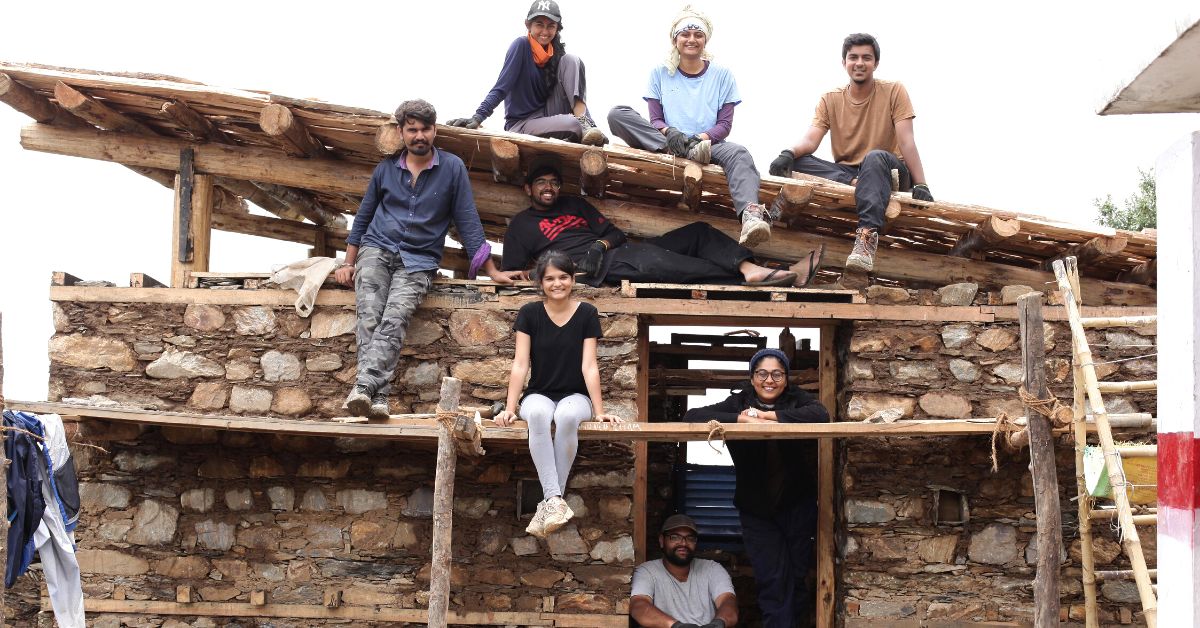
Architecture, the mother of all arts, can be perceived in different ways. Eight friends from the Centre for Environmental Planning and Technology (CEPT) saw it as a way to promote community development and sustainability.
In 2017, while they were in their final year of college, the group — Monik Shah, Aman Amin, Kishan Shah, Krishna Parikh, Vedanti Agarwal, Nishita Parmar, Prasik Chaudhary and Manuni Patel — visited a village in Ahmedabad. Amazed by the traditional rural architecture and the various methods used for construction, they decided they would take these lessons and turn them into a career. And so they launched Compartment S4, their sustainable architecture company.
Monik, the co-founder, says, “Initially, we went to the Ahmedabad Urban Development Authority (AUDA) and asked them for some projects. We got the chance to provide architectural services for a small number of toilets and lakes in villages between Ahmedabad and Gandhinagar. That was the start.”
Within a span of five years, the team has carried out several remarkable projects, some of which are listed below:
Otla Par Gammat, December 2017
In Gujarati, otla means verandah, and par gammat means to talk.
“This was our first project, under which we built an Anganwadi centre in Badalpara Gram Panchayat of Gir district of Gujarat. We built this structure using local resources and skills,” Monik explains. “Its roof has been made with clay axes. For this, we gave about 3,000 kulhads to 4-5 potters of the village. Additionally, the walls are made from locally available limestone and cement has been used only on the joints.”
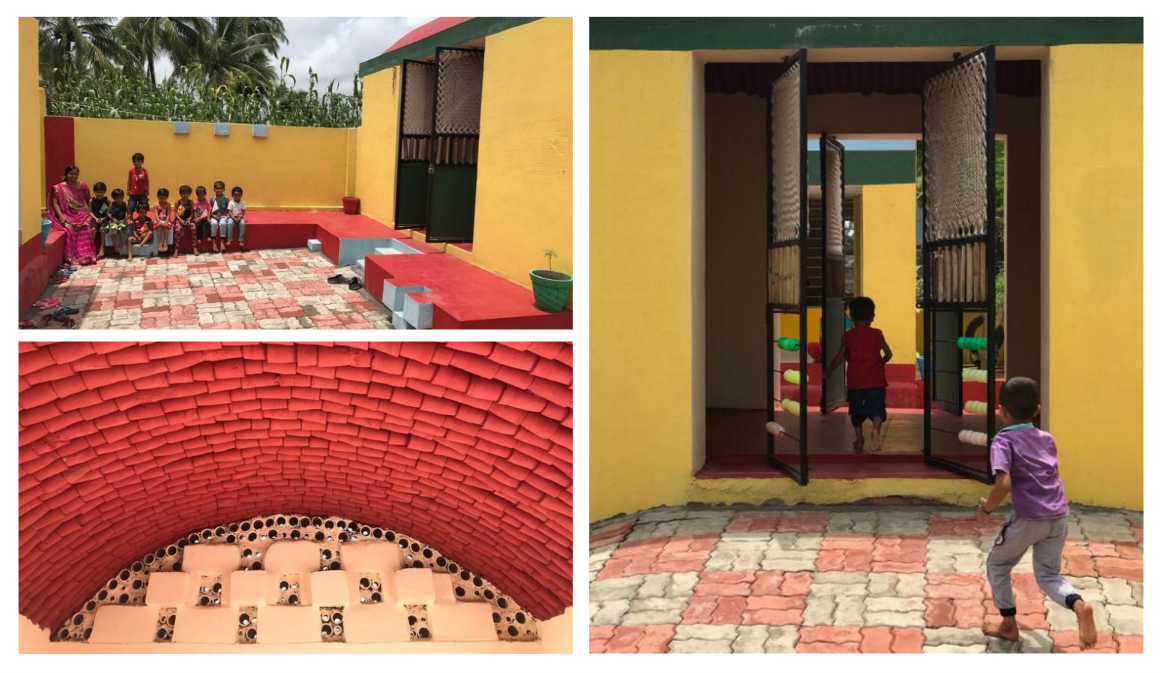
He also says that the heat in Gir reaches up to 45-50 degrees Celsius. But their construction technique helps the Anganwadi centre remain cold even during the summer. Monik says that the project also provided local employment. After completing the project in 12 days, CS4 handed over its model to the villagers, so that they could build such structures themselves, if needed.
Kishan says, “In this centre, we have also made a play area made with household items like cans and tyres for children. Thus, a mere Rs 2.5 lakh was spent for completing the structure. Normally, Rs 5-6 lakh is spent in setting up such centres.”
Lakdi ki Kathi, May 2018
“The building is an extension to the existing secondary school building in Ghuggukham village in Uttarakhand. The site is at the peak of a hill overlooking a lush green valley, on which the village is situated. The construction was completely cementless. The school was made from clay, stone, and wood, and it took just 17 days to build this earthquake-resistant structure,” says Nishita.
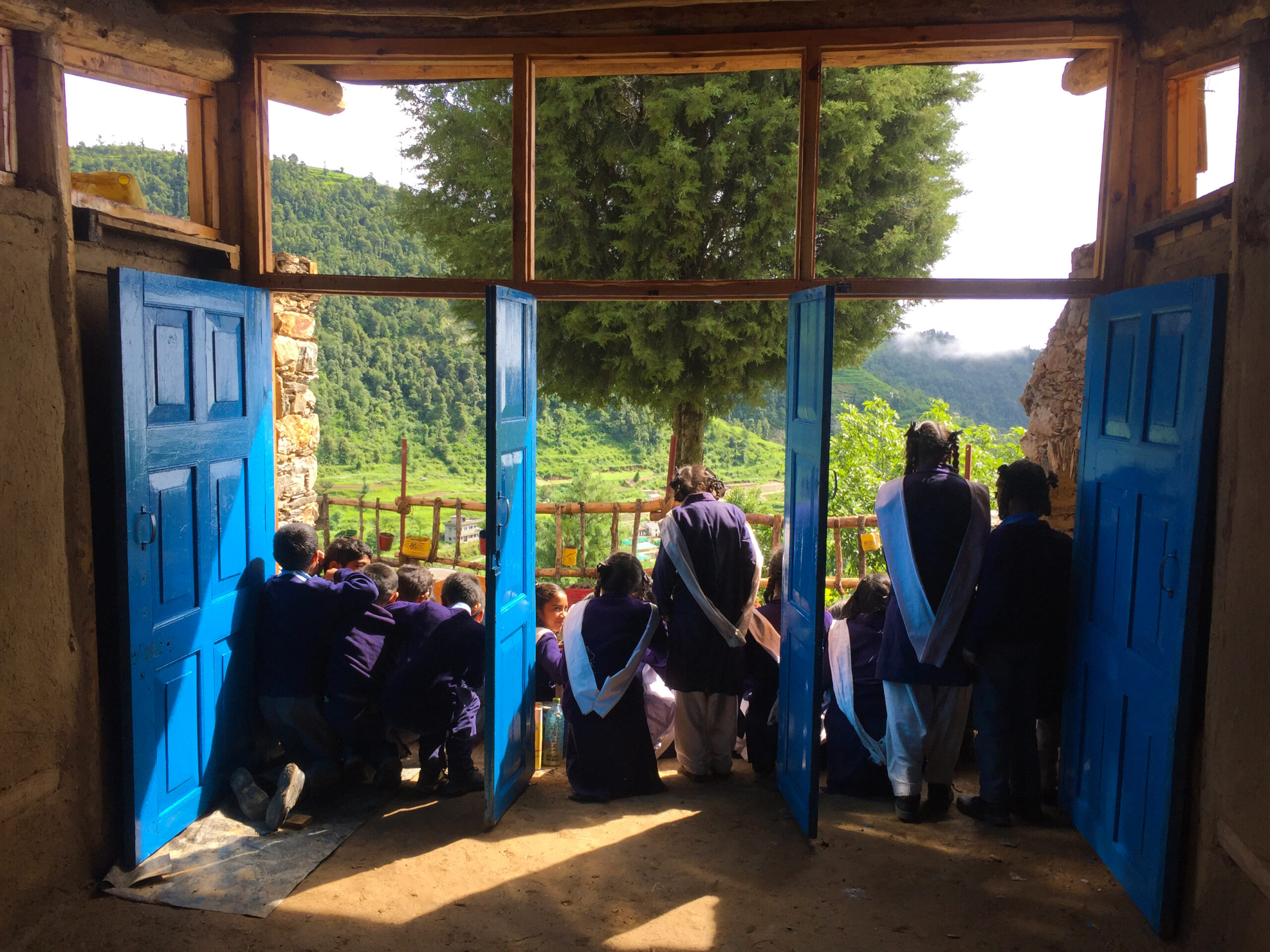
The building and spaces have been designed according to the space requirements of the students and teachers. Local materials and techniques are used for construction, simultaneously involving villagers and school students in the process. The team also incorporated earthquake resilience, waterproofing and water harvesting into the design, based on the problems faced by the village. “Hence, the building system and techniques are designed as a prototype for the village to adopt from,” says Monik.
Pink Toilet, 2019
In Uttarakhand, the team decided to build toilets to tackle open defecation on behalf of the Pauri district administration.
Monik says, “Usually it takes 3,500-4,000 bricks, and 25-30 bags of cement, to build a toilet. But we made it in just 2,000 bricks and 15 bags of cement. We also provided thermal insulation to them. We used rat trap bonds. It’s a type of brick masonry that can reduce the number of bricks. The purpose of this project was to make villagers aware of the importance of toilets. We also set up vending machines and breastfeeding rooms, and spent only Rs 2 lakh to build this 150 square feet toilet.”
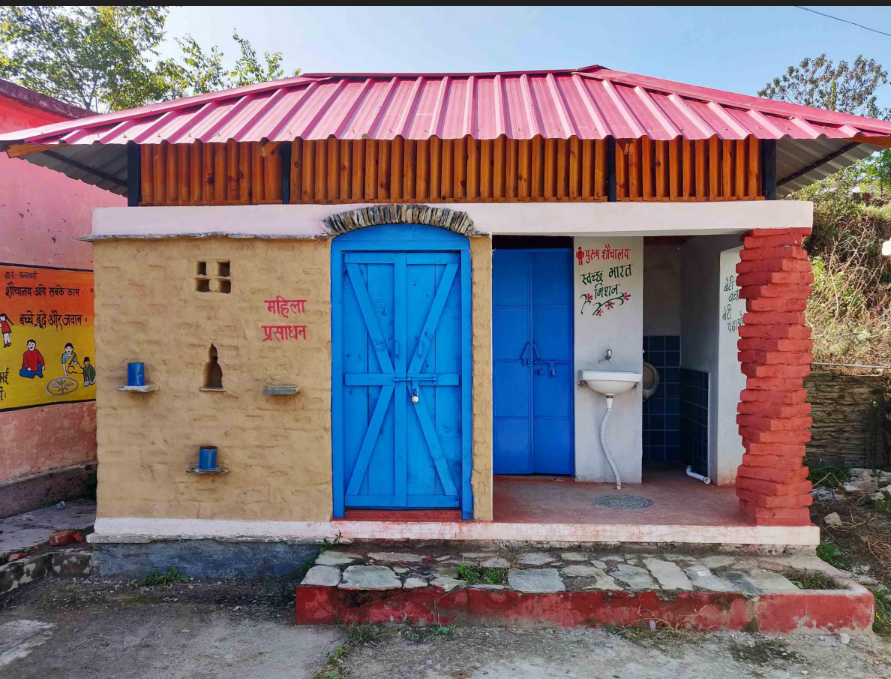
He adds that this toilet is completely earthquake resistant, and in view of the electrical problems, it has been given a ventilator at a height of seven feet, so that natural light can come in.
The notable element here is that the Pauri administration constructed toilets in the entire district with this model.
Anneki Anganwadi, 2019
“We had the opportunity to build an Anganwadi in Haridwar district of Uttarakhand. The previous centre was very dirty, as the villagers used to dump waste near the old building. We had to take out 25 tractors worth of waste to begin the work,” shares Monik.
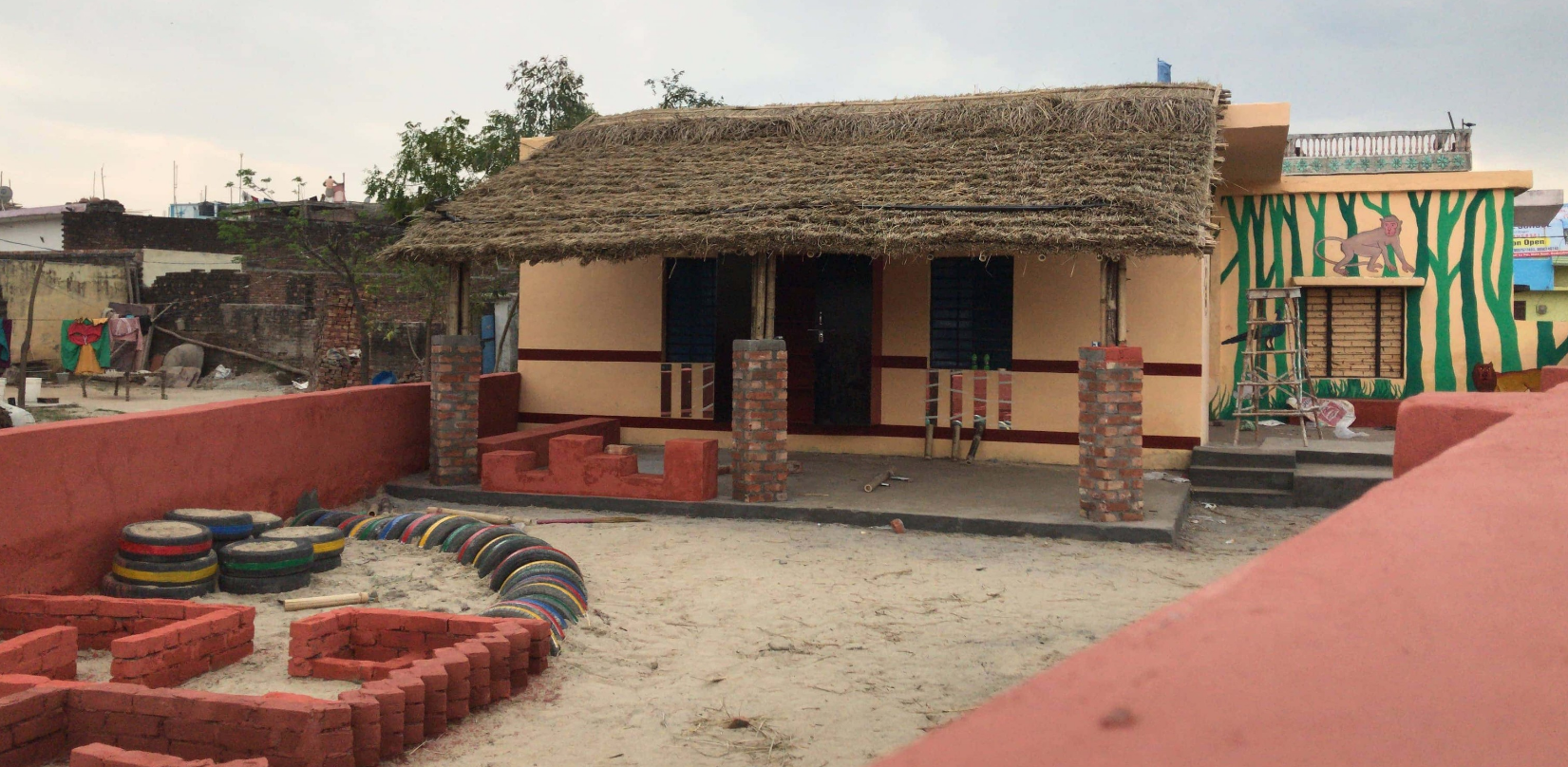
The Anganwadi, which also has a playground, was built in a way that the people of the village can hold important meetings there. “An Anganwadi functions till 1 pm. So we thought, why not use it as a public meeting space after this time? Moreover, these Anganwadis work as spandhan kendras. The Anganwadi workers have a role beyond teaching. They keep a count of malnourished kids, pregnant ladies, breast cancer issues, women and children health,” he adds.
Later, the team was called by the ICDS and received an offer to prepare two weather-wise designs for each district of Uttarakhand.
Basa, 2020
In this project in Pauri district, CS4 decided to promote tourism through the local culture and people. Monik says, “Under this, we researched for a month in Khirsu village and decided what, why, and how we have to do it. After that we built a tourism centre.”
“It has four rooms, with a Garhwali kitchen on the ground floor, and a museum on the upper floor. We have made 12 panels to educate tourists about the history, tourist places, lifestyle, farming and festivals of the village. This centre has been made with wood and stone. The local women take care of it. It also has a packaging room for turmeric, mandava flour and water bottles.”
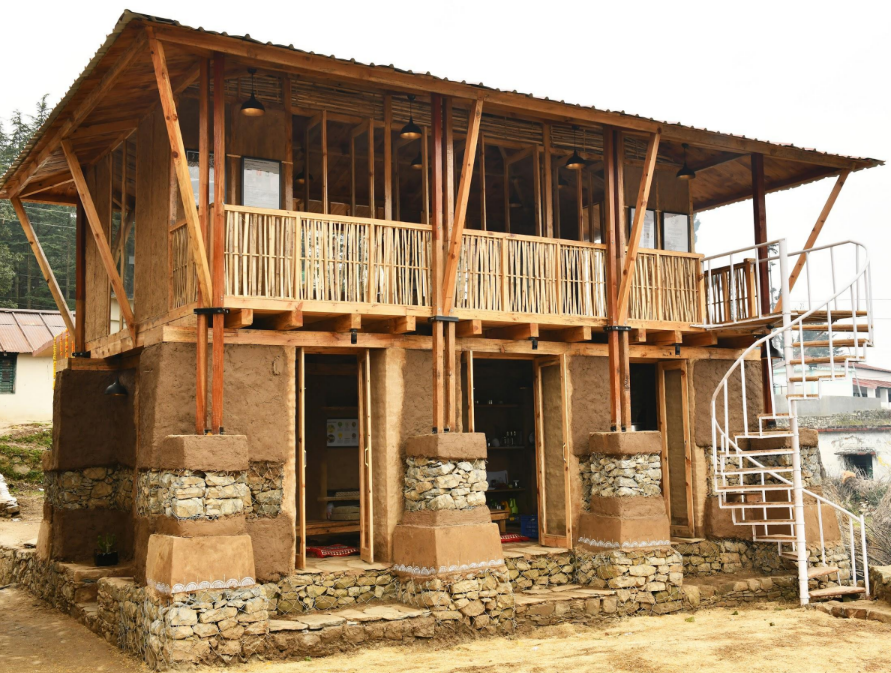
Around Rs 60 lakh were spent to build the centre with wood, stone and clay, but in about 10 months it has earned Rs 8-10 lakh. In this way, this centre has proved to be a boon for the people of Khirsu village.
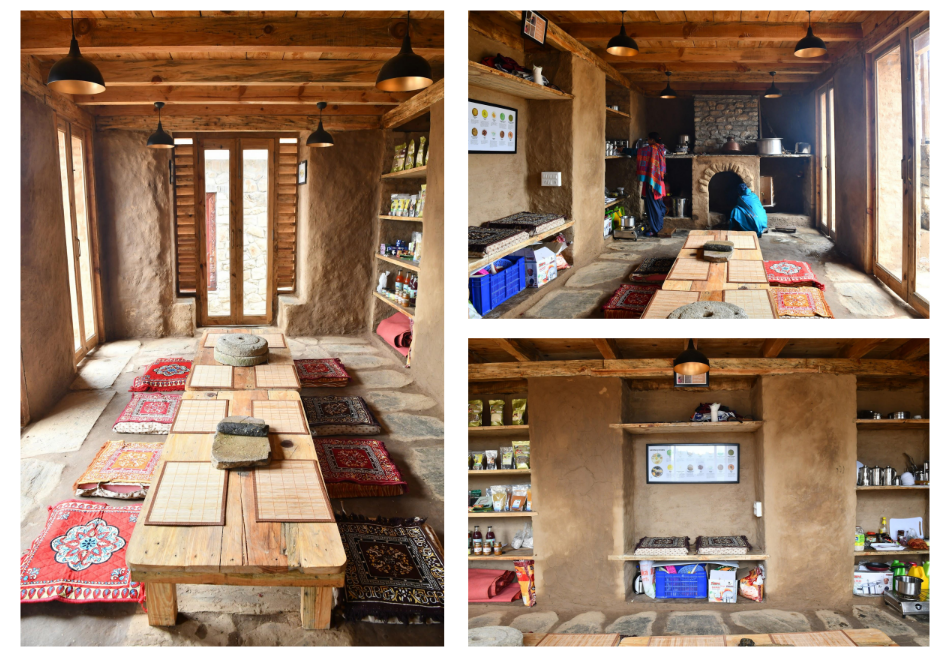
Gaughar (Cattle shed), 2020
“This is a well-designed shelter that is sensitive to the cattle. It has efficient space management, circulation, drainage and ventilation systems, and is integral for the cattle’s health and milk yield,” says Monik.
The project is located in Surendranagar district of Saurashtra region of Gujarat. The cowshed has been designed for 80-85 cows, with ancillary facilities. The project is in its final stage.
“Cows are divided into milking cows, non-milking cows, pregnant cows, calves, and bulls. The existing site condition and the divisions amongst the cows guide the layout of the gaushala. The space has been designed considering the efficiency of flow of inlet food materials for the cows and removal of organic waste from cow faeces and urine,” Monik says.
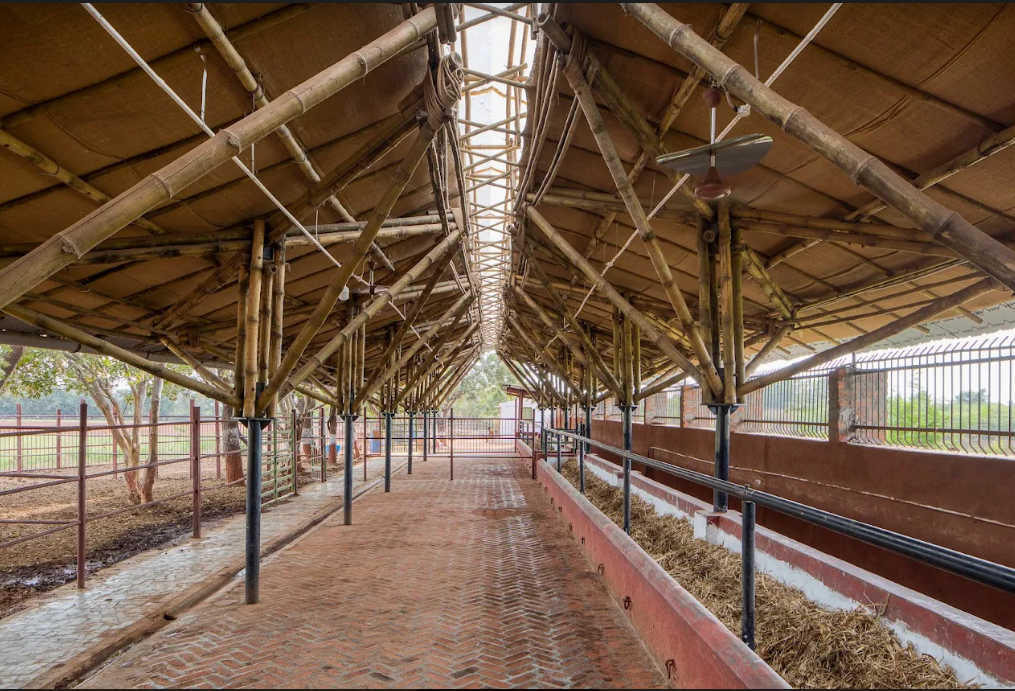
The design also incorporates systems to collect organic waste and milk and convert them into usable products. Along with technical detailing, major efforts have been put to make the building a friendly environment for cows to live in. A part of the project also includes milk processing units and office space designed by giving internal courtyards, making the space open to multiple uses.
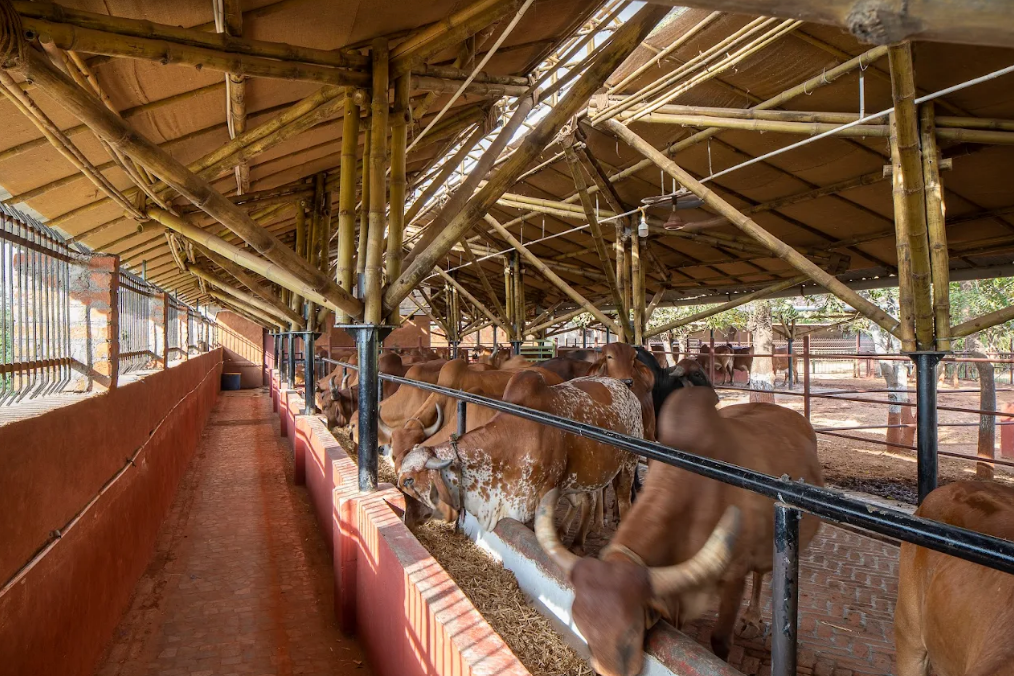
“Bamboo is the primary material used to make the shed. The structure is placed on steel columns. Multiple steel joints are fabricated at the junctions for making the bamboo joints efficient. We’ve put an exposed brick flooring that does not heat up and is not slippery. Jute cloth is used as a heat insulator below the tin sheets on the roof. The main walls have been made with stone masonry as it is cost efficient and locally available in the area. Local mud plaster techniques are used for the wall,” shares the architect.
What’s the future plan?
The co-founders of CS4 are working in multiple fields. “Each partner takes care of each project,” Monik says. CS4 aims to work with the government, NGOs, foundations, organisations that work for social causes, as well as with individual and private clients. Their aim is to build a sustainable practice and achieve the right balance, to contribute effectively towards projects in the rural and urban areas.
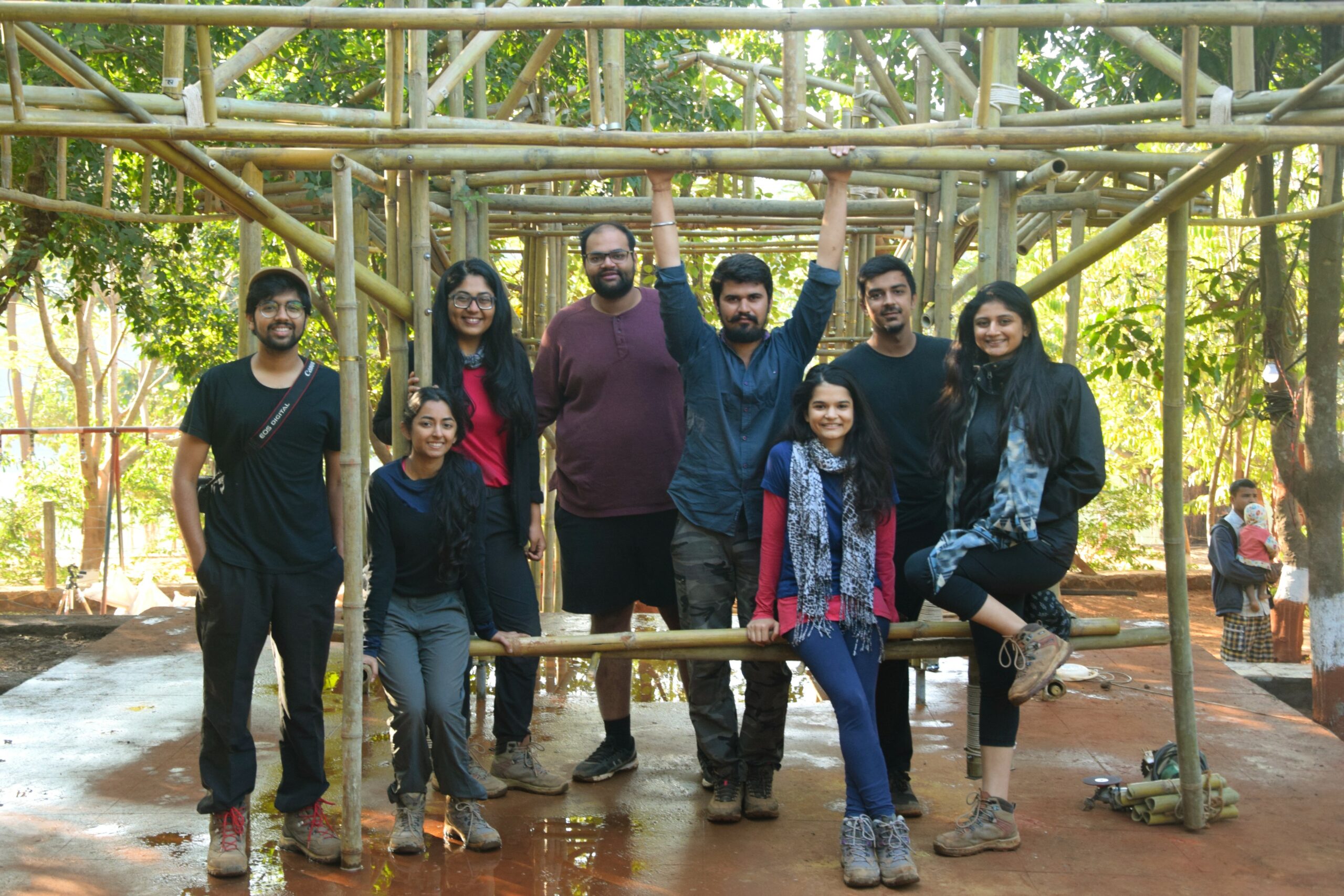
CS4’s clients include Nainital Tourism Department, Surat Forest Department, ISCON Group, Shankar Ice Cream, Midas Hospitality Group and the Water, Sanitation and Hygiene (WASH) programme by UNICEF.
Interested in Compartment S4’s work? Contact them via their website or Facebook.
Read this story in Hindi here.
Edited by Divya Sethu
If you found our stories insightful, informative, or even just enjoyable, we invite you to consider making a voluntary payment to support the work we do at The Better India. Your contribution helps us continue producing quality content that educates, inspires, and drives positive change.
Choose one of the payment options below for your contribution-
By paying for the stories you value, you directly contribute to sustaining our efforts focused on making a difference in the world. Together, let’s ensure that impactful stories continue to be told and shared, enriching lives and communities alike.
Thank you for your support. Here are some frequently asked questions you might find helpful to know why you are contributing?


This story made me
-
97
-
121
-
89
-
167











